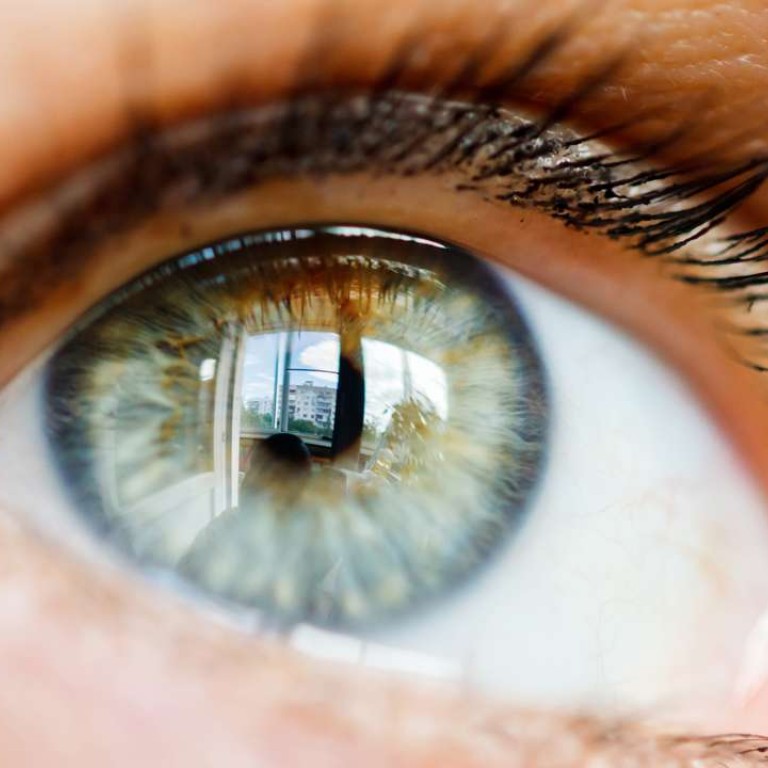
Travelling light: how tech will let you take holiday snaps in the blink of an eye
Sony’s contact lens camera patent is harbinger of a time when we’ll use bodily implants for all sorts of things; for now, be happy with smartphones and apps that turn photos into a short-burst video
Imagine Kowloon Pier without cameras and smartphones. No posed photographs, no selfie sticks, and no phones being dragged through 180 degrees to create identical panoramas of Victoria Harbour. Not even a gaggle of tripods waiting for the Star Ferry and the Aqua Luna. Just people walking, talking and … blinking a lot.
The lives of tourists, travellers and photographers may be heavy on gadgetry for now, but a new concept from Sony promises a completely hands-free way of capturing views and recording precious memories. A patent registered recently by the Japanese electronics giant appears to show a kind of smart contact lens that can the wearer can use to take photos and videos purely by blinking. Once for a photo, twice to roll the video.

It may be the ultimate way of travelling light, but whether Sony’s eye cam ever becomes reality is another matter; its engineers will have to find new ways of shrinking a camera sensor, and there’s also the small matter of where the photos and videos would be stored, and how the product would be powered. Power could theoretically be transmitted wirelessly from an external battery pack, which could also be equipped to receive photos from the contact lens via Bluetooth.
Sony’s concept is not all that different to the tiny, transparent, heads-up display of Google Glass, but is this really how we want to record our adventures? Besides, if you’re taking pictures with only your eyes, you’re going to have some physical constraints; restricted zoom and a narrow field of view seem likely, although autofocus would still be possible. Nor could you take long exposure photos, unless you could stand extremely still.

Perhaps we’ll see bizarre accessories like a “selfie stack” harness on a tripod that keeps your head still, a wearable flash strapped to the photographer’s head, and various filters built into sunglasses. Tourists may also want a tiny microphone implanted in their bodies somewhere, which gives you a clue about where concepts like Sony’s smart contact lens is really headed; wearable sensors and implants. It sounds futuristic, but putting any kind of sensor inside the body would constitute a new era of internally wearable devices.
However, the end result of Sony’s smart contact lenses is likely to be that tourists record everything, which takes us back to the era of the 24/7 camcorder. That may not be welcome among travellers because the trend at the moment is for the short, snappy, social-media-friendly content that screams, ‘I was there’ in ways that are as creative as they are short.

These few seconds of ‘moving’ photos that also record audio initially seem like a video. They are, kind of. The phones snap a JPEG photo and records a short MP4 video, so they’re not exactly savvy on storage space (Live Photos is activated by default on the iPhone, but Motion Photos is optional on the S7).
Shortly after Live Photos appeared late last year, Instagram launched its own app called Boomerang, which does a similar, though not identical job. A video-looping app, Boomerang takes a burst of 10 photos to create a very short video that loops. Sounds like a GIF, or perhaps a time-lapse? It’s both of those things; unlike the other motion photos, Boomerangs don’t include audio. The DSCO app creates a similar short burst of video.
Boomerang means that anyone can join the Live Photo revolution whatever phone they have, but there’s still a lot of trepidation and confusion about introducing motion to photography. How do you choose between taking a photo, a video, or a Live Photo/Boomerang? It requires thought, but the key ingredient is to keep still yourself and to capture motion in the subject; a cute animal is perfect, though for travel photography it’s all about adding subtle motion to an otherwise static postcard-style image.
WATCH two Instagram posts made with Boomerang
A video posted by Sammy the Fluff (@sammythefluff) on Oct 22, 2015 at 7:59am PDT
A video posted by jefferson kent york (@jeffonline) on Apr 21, 2016 at 8:57am PDT
While the smartphone might be the traveller’s best friend for now, it’s classic transition tech; we’ll all wear gadgets inside our bodies in future. As well as Sony’s clever camera, other implants on the horizon include digital tattoos that could unlock hotel rooms, and implanted RFID chips that could replace passports. Injectable electronics like that might seem a long way off, but blink and you’ll miss them.

